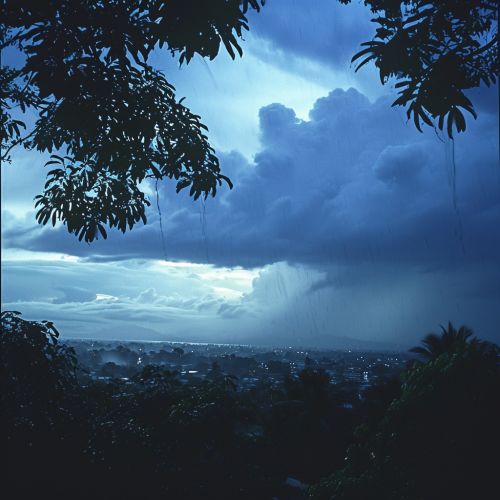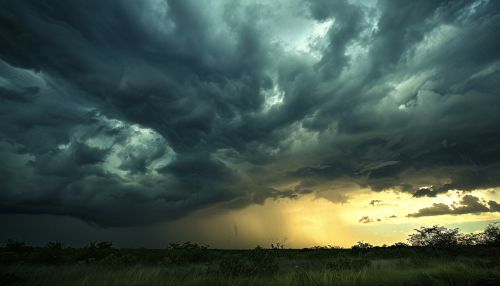Monsoon
Introduction
A monsoon is a seasonal reversing wind accompanied by corresponding changes in precipitation. These large-scale weather patterns occur due to differential heating between the land and the ocean. Monsoons are primarily associated with the Indian Ocean, but they also affect other parts of the world, including the Americas, Australia, and Africa.


Characteristics of Monsoons
Monsoons are characterized by a dramatic shift in wind direction and a significant change in precipitation levels. The wind shift is due to the difference in heat absorption between the land and the sea. During the summer, the land heats up faster than the sea, creating a low-pressure area over the land. This draws moist air from the sea, resulting in heavy rainfall. Conversely, in the winter, the land cools down faster than the sea, creating a high-pressure area over the land. This drives dry air from the land towards the sea, resulting in a dry season.
Causes of Monsoons
The primary cause of monsoons is the differential heating of the land and sea. However, other factors also contribute to the development of monsoons. These include the Coriolis Effect, which is the deflection of air due to the Earth's rotation, and the presence of large landmasses such as the Himalayas. The Himalayas act as a barrier for the monsoon winds, forcing them to rise. As the air rises, it cools and condenses, forming clouds and causing precipitation.
Types of Monsoons
There are two main types of monsoons: summer monsoons and winter monsoons. Summer monsoons, also known as the wet season, are characterized by heavy rainfall and high humidity. They occur when the land heats up more than the sea, creating a low-pressure area that draws in moist air from the sea. Winter monsoons, also known as the dry season, occur when the land cools down more than the sea, creating a high-pressure area that drives dry air towards the sea.
Impact of Monsoons
Monsoons have a significant impact on the regions they affect. They influence the local climate, agriculture, and economy. In many parts of the world, the monsoon season is crucial for agriculture, as it provides the necessary rainfall for crop growth. However, monsoons can also cause severe flooding, leading to loss of life and property. On the economic front, monsoons can affect industries such as fishing and tourism.
Monsoons Around the World
Monsoons occur in various parts of the world, each with its unique characteristics. The most well-known monsoon occurs in the Indian subcontinent and Southeast Asia. Other regions affected by monsoons include the southwestern United States, northern Australia, and parts of Africa.
Climate Change and Monsoons
Climate change is expected to have a significant impact on monsoons. Rising global temperatures can intensify monsoons, leading to increased rainfall and more severe flooding. Conversely, changes in land use and deforestation can weaken monsoons, leading to decreased rainfall and potential droughts.
